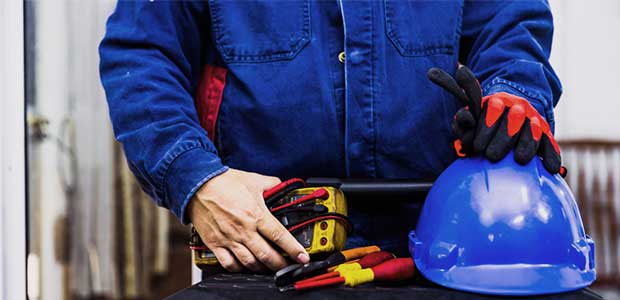
Why Electrical Safety Should Be a Priority in Post-COVID Planning
It’s more important than ever to not lose sight of fundamental protection programs and protocols.
The COVID-19 pandemic has changed the way many of us think about safety—at the workplace and in our everyday lives. As we look ahead to the best ways to be safe in the post-COVID world, keeping ourselves and teams safe from the threat of future outbreaks does not mean other safety practices and standards become less important.
With the increased risk of workers falling ill added to the list of everyday concerns, companies need to be more vigilant than ever about bolstering all elements of a safety program and considering the data around electrical safety.
Control of Hazardous Energy—Lock Out Tag Out was in the top four most cited Occupational Safety and Health Administration (OSHA) violations in 2019 and up one spot from the previous year—a fact that somehow manages to be alarming yet familiar.
Additional data from a five-year Panduit study revealed that 40 percent of companies surveyed reported workplace electrical incidents, and OSHA reported roughly 350 electrical-related deaths in the same span.
One of the only positive effects that COVID-19 may have for safety managers is the potential to increase budgets as a result of heightened focus and urgency to overhaul or update safety programs.
Here are some things to consider when planning and finalizing your updated safety plans to ensure that fundamental electrical safety doesn’t get dismissed amidst implementing new measures to keep workers safe from new COVID-19 outbreaks.
Reassess and Overestimate Basic PPE Needs
Prior to COVID-19, the average person probably didn’t even know what PPE meant.
And while recent attention has been focused the single element of facemasks, it’s very possibly that other PPE elements will be consumed by the general public due to people’s increased need to complete tasks on their own that they previously would hire professionals to do.
Mass shortages aren’t likely for most PPE, but when considering how essential this equipment is minimize exposure to hazards, it’s best to plan ahead. Acquiring a full inventory of the following basic electrical safety gear can help to ensure safety regardless of unforeseen spikes in demand:
- Voltage-rated gloves
- Safety glasses
- Face shields
- Hard hats
- Safety shoes
- Hearing protection
- Flame-resistant clothing
- Arc-rated clothing such as hats, coveralls, vests and full body suits
Identify Potentially Hazardous Equipment to Be Augmented for Increased Safety
Having an ample supply of PPE is essential but far from an electrical hazard catch-all. A more robust solution is to identify potentially hazardous equipment and enclosures that can be replaced or upgraded to remove the threat.
Arc-resistant equipment. Rather than using traditional equipment such as switchgear and motor-control centers (MCCs), arc-resistant versions of this equipment can be specified and installed in place.
Arc-resistant material reduces exposure to an arc flash hazard by directing the energy away from a worker performing a task, such as operating or racking a circuit breaker in or out with the doors closed.
Absence of voltage testers. Both qualified and unqualified personnel are at risk of pursuing access into electrical enclosures without being fully aware of the present danger. AVTs prevent enclosures from being accessed until an absence of voltage is confirmed and are typically easy to operate, making them a smart and effective solution to enhance any work environment.
Use This Time to Revisit the Hierarchy of Controls (HOC)
Understanding the hierarchy of controls and how to apply its principles is critical to designing a new safety program and identifying gaps in current ones.
There’s an abundance of information out there on the HOC, and education on the topic warrants a deeper dive into the subject matter than can be provided in this article, but all safety managers should brush up on the topic.
Ultimately, people other than qualified electricians will need to operate or service your equipment. Knowing that your safety program was built around the HOC will deliver peace of mind by reducing the risk of an electrical incident for everyone who comes in contact with equipment—machine operators or IT personnel.
Safety Needs to be Engrained into Company Culture
COVID-19 is a historic event that has people and companies questioning all aspects of safety and culture at home and at work.
This renewed emphasis provides safety managers with an opportunity to improve and affirm worker safety’s place as a critical element of company culture, rather than a set of rules to be followed.
Take this time to engage company leadership by bringing recommendations that elevate safety programs. This can be anything from creating a monthly safety newsletter to creating a safety committee to share information and implement the latest best practices companywide.
After all, beyond the all-important human element, there’s a business case to be made here as well.
Severe electrical faults, like arc flash incidents, can shut down an assembly plant and send hundreds of workers home. It’s also possible that one tragic event could create a complete plant closure, possibly indefinitely.
Plus, the costs for plant repairs is minimal when compared with the costs for medical treatment for employees, which can run into millions of dollars, or other major financial factors like the cost of OSHA fines and litigation.
No Time Like the Present
There’s a lot of uncertainty yet about how to best proceed into the post-COVID work environment, but no matter how your company proceeds, it’s crucial to not lose sight of safety measures that extend beyond the virus because even when the “new normal” sets in, electrical hazards will still represent significant safety and financial risks that command mitigation.
This article originally appeared in the June 2020 issue of Occupational Health & Safety.